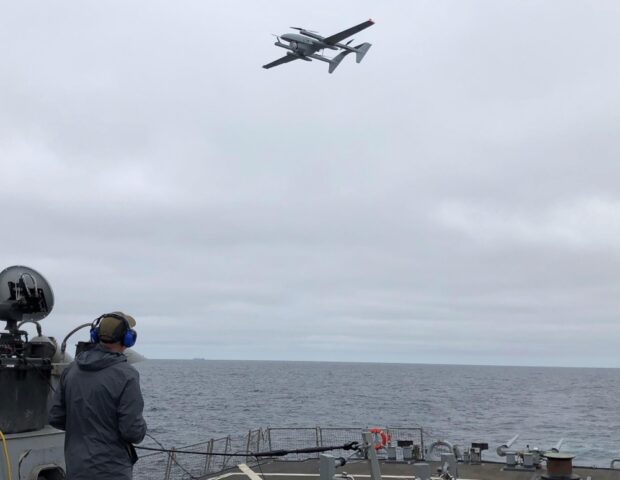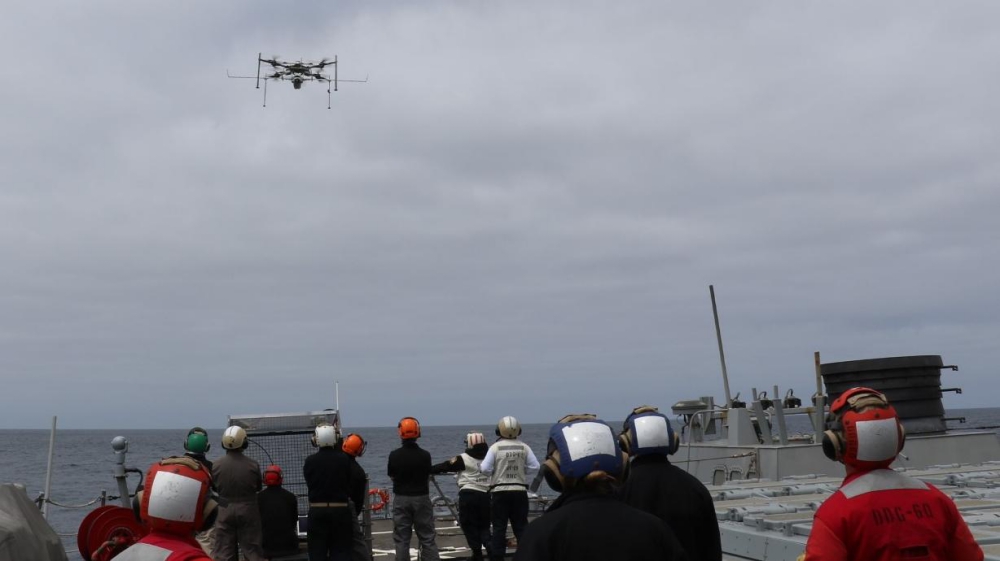The US Navy recently completed an Unmanned Aircraft System (UAS) wide-area mission demonstration to assess capabilities that could benefit the fleet in the future.
The Navy and Marine Corps Small Tactical UAS program office (PMA-263), Naval Air Warfare Center Aircraft Division (NAWCAD) AIRWorks, and Navy Warfare Development Command (NWDC) led the sea-based demonstration July 11-15 aboard USS Paul Hamilton (DDG-60) in San Diego.
Two vendors, Insitu Inc. and L3 Harris, showcased multiple technologies designed to operate as a portable system in challenging conditions while providing the same wide-area coverage as a shore-based system.
“This event was a great opportunity to evaluate unmanned capability in a relevant environment, learn how it can support and enhance operations, and get direct feedback from the fleet,” said Col. Victor Argobright, PMA-263 program manager. “A lot of work was done in a short time across the enterprise to make this happen.”
Earlier this year, PMA-263 and AIRWorks teamed up in collaboration with Innovation and Modernization Patuxent River (IMPAX), the NAWCAD partner for experimentation, technology demonstrations, and prototyping, and with NWDC’s Fleet Experimentation (FLEX) team to identify and examine a UAS capable of performing wide-area missions from a Navy surface vessel at long ranges for extended periods while relaying accurate, relevant information back to the host vessel.
The team down selected the vendors to participate in the demonstration based on their ability to provide a system able to operate without additional support systems, deploy without dedicated launch or recovery equipment, and have maximum portability, self-sufficiency, and modularity across UAS hardware and payloads.
“The USS Paul Hamilton team was pleased to be a part of this demonstration,” said Cmdr. Jake Ferrari, the ship’s commanding officer. “To see the energy put behind providing capabilities associated with UAS aboard surface vessels is exciting. I look forward to future efforts that will provide an enduring fleet capability that is integrated into sustained operations.”
The systems demonstrated wide-area surveillance capability across multiple mission sets. The government will review data gathered during the demonstration to further evaluate each system’s performance.
“Both vendors stepped up to the challenge and the crew of the USS Paul Hamilton provided outstanding support and feedback,” said Argobright. “It’s teamwork like this that’s needed to get capability in the hand of sailors as quickly as possible. We will be leveraging this effort and working with Navy leadership on the next steps to make this happen.”
As part of a multi-phased merit-based selection process, the demonstration may lead to Insitu or L3 Harris being awarded an Other Transaction Authority (OTA) prototype project under the authority of 10 U.S.C. 2371b later this year. OTAs are used by the DoD to carry out prototype,
Source: Press Release


